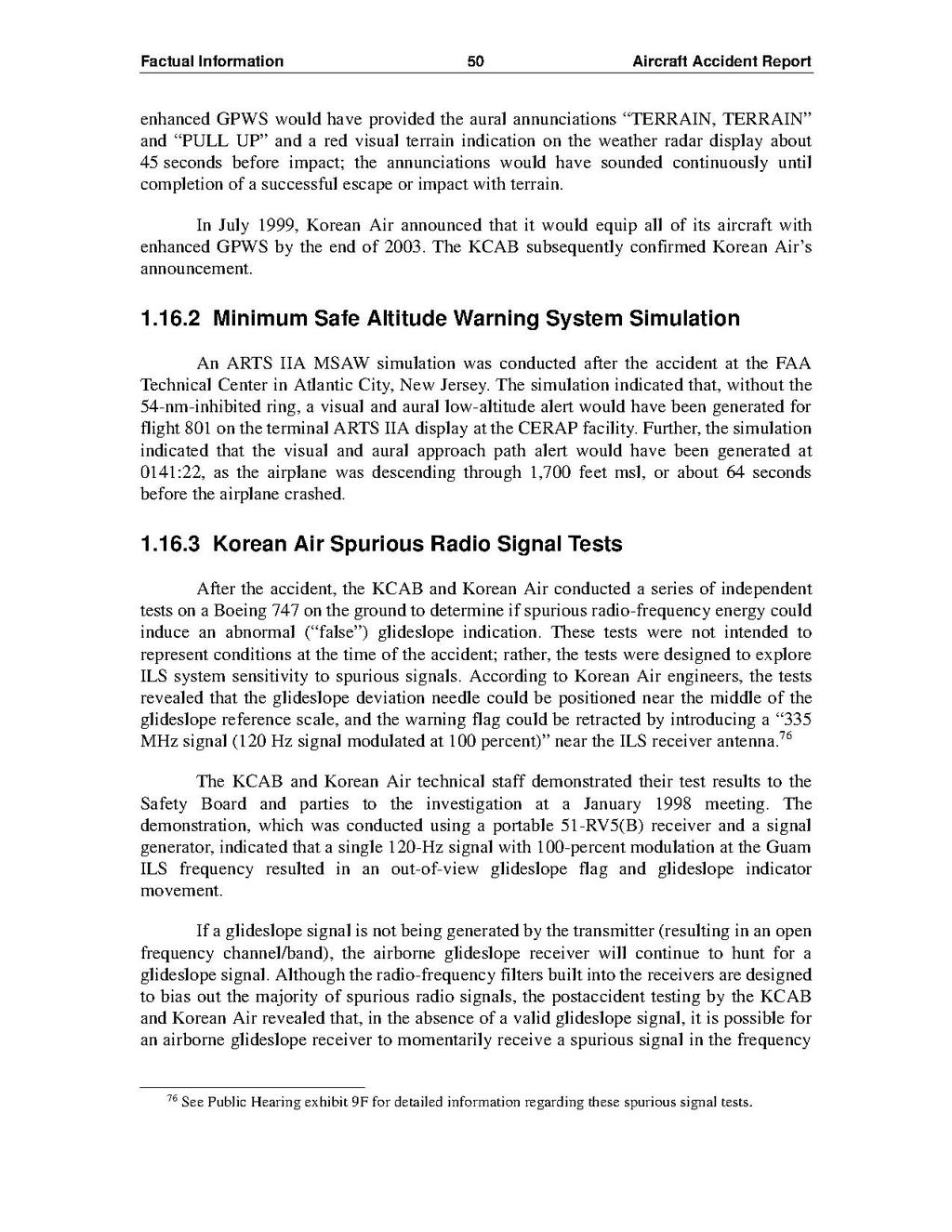enhanced GPWS would have provided the aural annunciations "TERRAIN, TERRAIN" and "PULL UP" and a red visual terrain indication on the weather radar display about 45 seconds before impact; the annunciations would have sounded continuously until completion of a successful escape or impact with terrain.
In July 1999, Korean Air announced that it would equip all of its aircraft with enhanced GPWS by the end of 2003. The KCAB subsequently confirmed Korean Air's announcement.
1.16.2 Minimum Safe Altitude Warning System Simulation
An ARTS IIA MSAW simulation was conducted after the accident at the FAA Technical Center in Atlantic City, New Jersey. The simulation indicated that, without the 54-nm-inhibited ring, a visual and aural low-altitude alert would have been generated for flight 801 on the terminal ARTS IIA display at the CERAP facility. Further, the simulation indicated that the visual and aural approach path alert would have been generated at 0141:22, as the airplane was descending through 1,700 feet msl, or about 64 seconds before the airplane crashed.
1.16.3 Korean Air Spurious Radio Signal Tests
After the accident, the KCAB and Korean Air conducted a series of independent tests on a Boeing 747 on the ground to determine if spurious radio-frequency energy could induce an abnormal ("false") glideslope indication. These tests were not intended to represent conditions at the time of the accident; rather, the tests were designed to explore ILS system sensitivity to spurious signals. According to Korean Air engineers, the tests revealed that the glideslope deviation needle could be positioned near the middle of the glideslope reference scale, and the warning flag could be retracted by introducing a "335 MHz signal (120 Hz signal modulated at 100 percent)" near the ILS receiver antenna.[1]
The KCAB and Korean Air technical staff demonstrated their test results to the Safety Board and parties to the investigation at a January 1998 meeting. The demonstration, which was conducted using a portable 51-RV5(B) receiver and a signal generator, indicated that a single 120-Hz signal with 100-percent modulation at the Guam ILS frequency resulted in an out-of-view glideslope flag and glideslope indicator movement.
If a glideslope signal is not being generated by the transmitter (resulting in an open frequency channel/band), the airborne glideslope receiver will continue to hunt for a glideslope signal. Although the radio-frequency filters built into the receivers are designed to bias out the majority of spurious radio signals, the postaccident testing by the KCAB and Korean Air revealed that, in the absence of a valid glideslope signal, it is possible for an airborne glideslope receiver to momentarily receive a spurious signal in the frequency
- ↑ See Public Hearing exhibit 9F for detailed information regarding these spurious signal tests.
